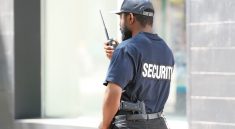
Building security has become more sophisticated and all-encompassing in the past two decades or so. This has been, in part, a response to an increase in both range and complexity of the threats faced by any modern building. As well as the risks of burglary and vandalism, building managers must also bear in mind the persistent, though more rare, threat of terrorism.
Access control is the first, and most important, line of defense against such threats. In days gone by, access control involved a peak-capped security guard checking ID cards. However, this process was inevitably prone to human error, and has now, through technological advances, been rendered more efficient and effective.
Electronic chips, implanted in to plastic cards, have enabled the widespread deployment of smart cards. These provide automated verification against an in-house database, and can be simply swiped against a reader; Arguably quicker and more secure, as well as less hassle for building personnel. Meanwhile, for highly sensitive areas, such as laboratories or server rooms, bio metric readers are now commonplace.
However, a strong access control system should only be considered as part of a holistic solution. Modern buildings tend to have integrated security solutions installed. These include further features, such as CCTV cameras, working in tandem with access control services. Such integrated security solutions are highly recommended for optimal effectiveness.



